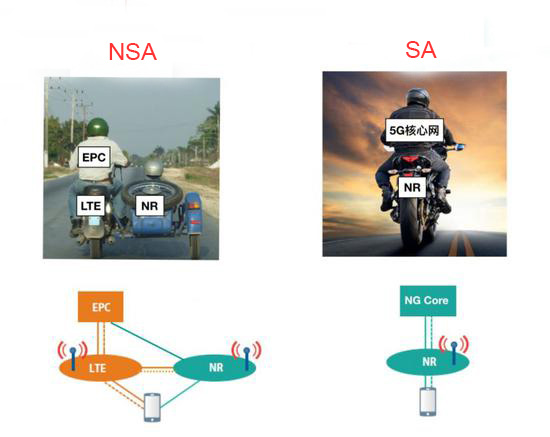What is the difference between NSA and SA
Unlike 4G, there are two networking options, NSA and SA, in the 5G era. This makes the entire telecommunications industry seem to have two girlfriends suddenly. We are struggling and suffering, who should we choose?

What is the difference between NSA and SA?
1. The core is different:
NSA builds a new 5G base station, adopts a 4G core network or builds a 5G core network; SA builds a new 5G base station and 5G core network.
2. Different operators:
From the operator's point of view, NSA (non-independent networking) can be seen as a transition plan in the early stage of 5G, and SA (independent networking) is the complete body of 5G.
Since NSA networking requires 4G and 5G public core networks, this method will not be able to support the low latency characteristics of 5G. With the construction of 5G networks, most operators will gradually turn to SA networking, or adopt SA/NSA hybrid networking.

3. Different network architectures:
NSA is a 5G network that integrates current 4G base stations and network architecture deployment. Therefore, its construction speed is very fast, directly using 4G base stations to install 5G base stations.
Can achieve 5G network coverage. However, because the architecture uses the 4G network architecture, the massive IoT access and low latency characteristics of the 5G network cannot be used. The SA networking is called an independent networking. In other words, it is to rebuild the 5G base station and the back-end 5G network, so as to fully realize all the features and functions of the 5G network.
Another difference that people pay attention to is the bandwidth rate, while NSA is much lower than SA
In the NSA networking, the terminal antenna must be dual-connected to two wireless access technologies, LTE and NR; in the SA networking, the terminal antenna is only connected to the NR wireless access technology. If the terminal is configured with two antennas, under NSA networking, one antenna is connected to NR and one antenna is connected to LTE; and under SA networking, both antennas are connected to NR.
Increasing the number of antennas is one of the main ways to improve the wireless network speed. This means that the uplink rate of the same terminal under the SA network is far greater than the uplink rate under the NSA network, which is twice in theory. Under NSA networking, these performance deficiencies will limit 5G use cases and directly affect the expansion of operators to new services.

 Networking
Networking EMBEDDED SYSTEMS
EMBEDDED SYSTEMS Switches
Switches Wireless Solutions
Wireless Solutions Industrial Computer
Industrial Computer Cloud Services
Cloud Services



